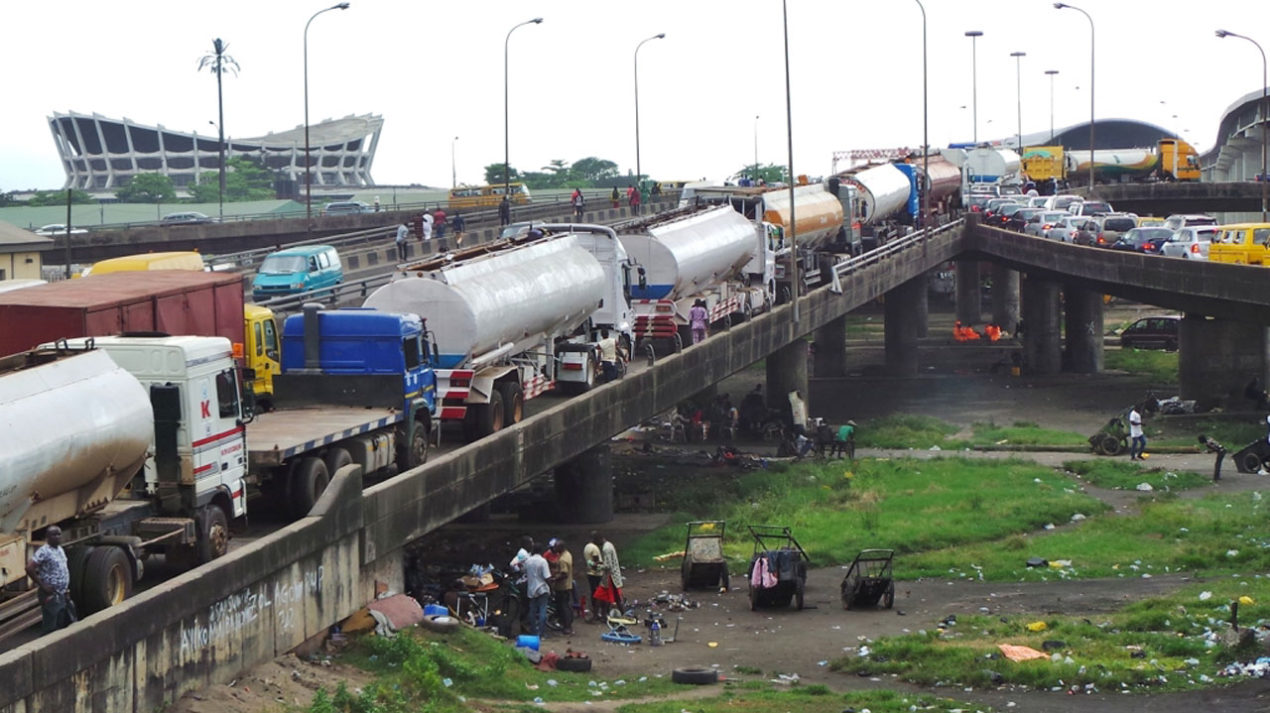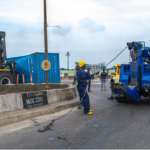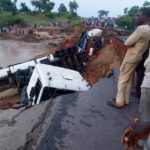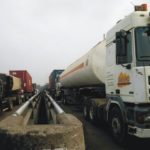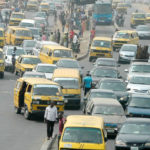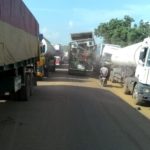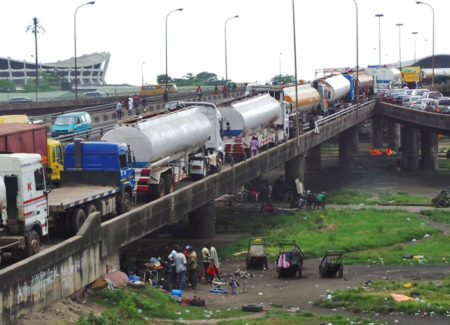
Some bridges in Lagos are at a risk of buckling under the weight of parked heavy-duty trucks.
The Ijora, Eko and Carter Bridges are under great strains from immobile articulated vehicles, a situation worsened by recurring gridlocks and the deplorable state of roads leading to ports and tank farms.
Other bridges affected by similar stress are those at Abati Barracks, Ojuelegba and Stadium.
The Guardian recently counted 85 articulated vehicles conveying containers of various sizes parked between the Ijora and Jibowu Bridges.
An empty 20-feet container weighs 2,000 kilogrammes. A 40-feet container doubles the kilogrammes. With an average truck weighing about 14,000 kilogrammes, the total weight of 25 stationary trucks on the Ojuelegba Bridge could be around 450,000 kilogrammes. This is besides the weight of other vehicles. The implication is that the four bridges on the Western Avenue area of the city – Ijora, Stadium, Ojuelegba and Abati Barracks – pack a massive 1.53 million kilogrammes on an average day.
The load on these bridges, not originally designed to host heavy static vehicles, and a lack of consistent and thorough maintenance could spell tragedy.
Structural engineer and immediate past President of NIStructE, Oreoluwa Fadayomi, said: “When these vehicles are stationary on the bridges for a long time, they have negative impacts. These include deterioration, bridge-fatigue, damage or even collapse. Moreover, there is no money anywhere now to build these kinds of solid structures again. Bridges are made so that vehicles keep moving.”
He warned: “There is also the risk of a fire. If any of the articulated vehicles catch fire, there would be a chain reaction, which can cause severe damage to the bridge. We are sitting on a keg of gunpowder because the bridges are weakening daily, as tankers, trucks and articulated vehicles park on them due to traffic congestion.”
He urged government to address the causes of vehicles parking on bridges and ensure proper and timely monitoring of the facilities. “Something should be done to stop it very fast because of the negative effect on the infrastructure and possible disaster in the event of a collapse,” Fadayomi added.
The challenge on the bridges is exacerbated by construction on the Apapa Road and the current fuel scarcity in the country. As a result, many vehicles are forced to stay permanently on the bridges for weeks, due to lack of loading bays in tank farms and oil companies.
Previous attempts by the Federal Government and Lagos State authorities to curtail the problem have proved abortive. The office of the Federal Controller of Works, Lagos, has on several occasions given ultimatums to truck drivers or even deployed force, to no avail.
Most of the bridges were constructed during the 1970s oil boom. The nation would need $8 billion yearly to close up the huge gap in its public infrastructure and about $14 billion every year to fund infrastructure. Regrettably, current spending on infrastructure is an estimated $6 billion. Also, for decades, budgets for capital expenditure by federal and state governments have been on the decline while recurrent expenditure has been rising. The average government budget for capital expenditure has been about 25 per cent.
According to the past President, Nigerian Institution of Structural Engineers (NIStructE), Dr. Samuel Ilugbekhai, the state of the bridges is one of gross structural abuse. He stressed that they were not designed to bear enormous weight from static trailers and tankers, and warned that their life spans could be shortened.
Urging government to put more effort into solving the problem, he noted the difference between buildings that house car parks and bridges. While multi-storeyed parks are designed for the specific purpose, bridges are intended to carry transitional loads within seconds. “They are not designed to retain loads for one hour, two hours, days or weeks,” Ilugbekhai said.
Also, President of the Nigerian Institute of Structural Engineers, Eddy Atumonyogo, said besides the destructive strain on the bridges, aesthetics is also compromised, with engine oil and other pollutants threatening surfaces.
The Federal Controller of Works in Lagos, Mr. Godwin Eke, however said government is aware of the dangerous state of the bridges. He said talks are ongoing with Ogun State to provide a loading bay where vehicles, especially those along Western Avenue, could park.
He disclosed that government has also engaged stakeholders like the National Union of Petroleum and Natural Gas Workers (NUPENG), Association of Maritime Truck Owners (AMATO) and National Association of Road Transport Owners (NARTO), with a view to solving the problem.
He added that if these efforts fail, the authorities might have to resort to towing the vehicles away.
Source: Guardian.ng

